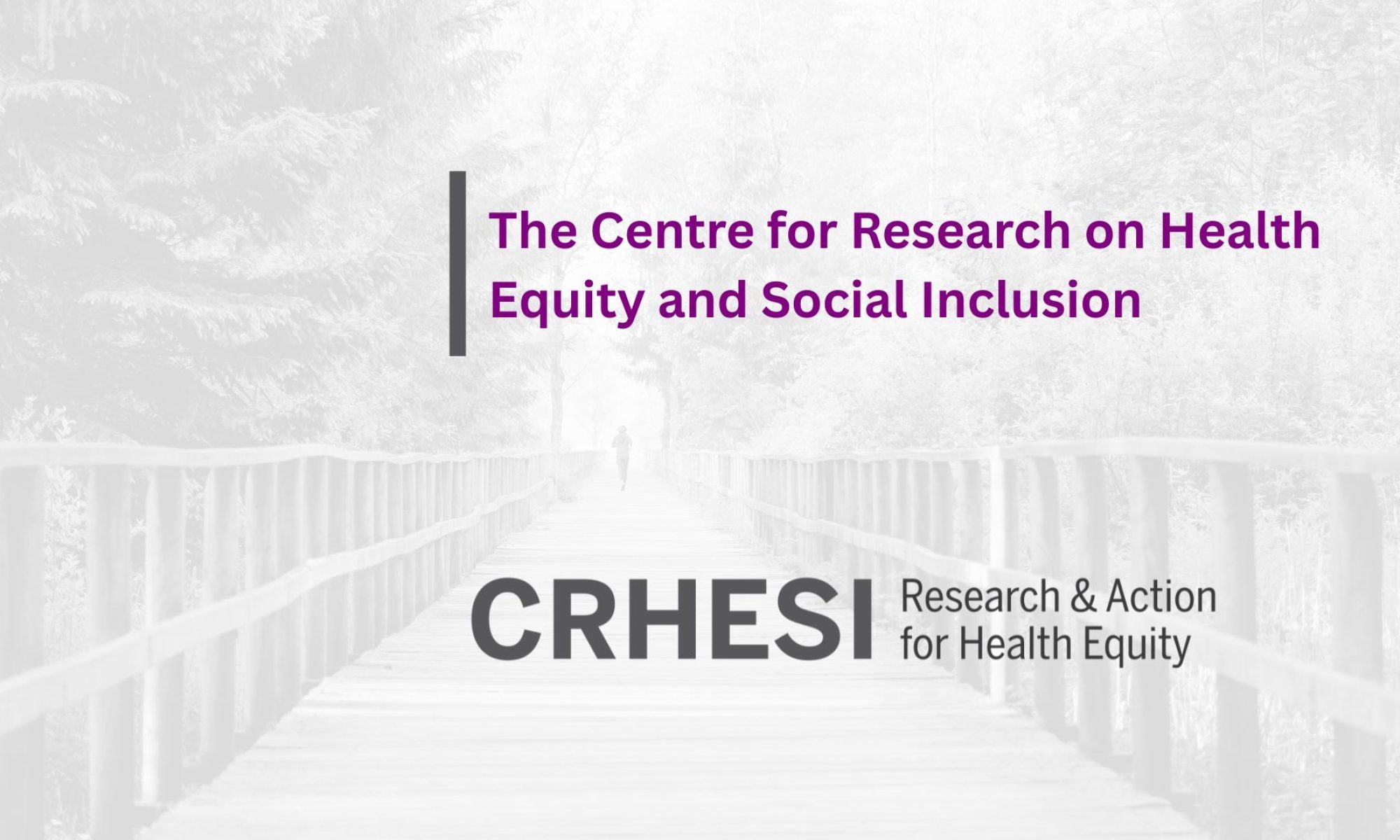by Dr. AnnaLise Trudell & Louise Pitre
The nonprofit sector has been a leader in advocating for equity, particularly in pushing for systemic change at multiple levels of government and in advocating for the needs of their clients. But what about the staff? What about the differential impacts of COVID-19 experienced by staff? How has equity been centred in the policies and practices of organizations?
While gender equity seems for many to have become a fight of the past, an ‘old hat’ conversation that pales in comparison to so many other pressing equity issues we face today, the pandemic has exposed that the gender fault lines still exist and risk getting worse if we don’t pay attention to this issue.
Covid-19 has disproportionally impacted women. Between overrepresentation in job losses, in essential service workers and in Covid-19 cases, as well as the increased burden of childcare falling to them, women are feeling the weight of the inequities. Even more so, particular women are feeling that weight. Racialized women are overrepresented in frontline and service jobs, and there is clear data now showing an association between Covid rates and neighbourhoods with large Black populations.
- In March 2020, 63% of job losses were experienced by women
- In May 2020, as the economy started to open up, jobs returned faster for men (2.4% increase) than for women (1.1% increase).
- Women earn $0.87 for every dollar earned by men
- During Covid, employment among women with toddlers or school-aged children fell 7% (vs. 4% men) between February-May
- Women spend an average of 2.5 hrs/day more on all unpaid-work activities than men: 5.4 versus 2.9 hours.
- 56% of the cases and 54% of the deaths from COVID-19 have been experienced by women.
- COVID-19 rates are disproportionately high in Indigenous communities, “because of their over-representation in essential occupations in the care sector, a lack of culturally-responsive health care services, and systemically racist health care systems that devalue and deprioritize their needs”(Sultana & Ravanera 2020)
- 56% of women workers (vs. 17% men) are concentrated in occupations known as the 5Cs: caring, cashiering, catering, cleaning and clerical functions, many of which are deemed essential occupations.
- racialized workers made up 42% of personal support workers, double the rate of racialized communities in Ontario at 23%
- Some reports show up to 30% increase in domestic violence rates across the country

These stats all intertwine- women lost jobs at a higher rate because they occupied parts of the economy (the 5Cs) that were hit by this recession, because they bear most of the childcare responsibilities at home, and because they typically make less than their male counterparts so on an individual household perspective, they made the most sense to take the time off to do childcare. This intertwining is especially challenging for Ontario’s nonprofit sector, as the vast majority of its workers are women.

Let’s imagine a scenario for a moment, one that many women and their organizations will face come the fall.
Your 7 year old child’s classmate receives a positive Covid-19 test, and your child is required to isolate at home for 14 days. While you are not required to also isolate, your child can’t stay home alone and you as the mother need to stay with them.
As a workplace, you ask this woman to use her time-related benefits (sick days/vacation) to cover this. But she may already have used those up while she had to stay home with her child from March-August. If her time-related benefits are exhausted, your policy is that she take an unpaid leave.
On an individual level, this may seem fair of the organization. We need to ask who the burden of care falls to— the individual woman, the organization (eg continuing to pay her), or government (eg increasing number of sick days or other financial benefit)? Because it is much too easy to make this burden a ‘neutral’ issue, simply a human resources policy, when in reality our equity approaches need to do the hard work of linking the macro consequences for women to our individual organization’s policies. When we download the burden on the worker, the reality is that we exert a form of oppression—we contribute to the systemic reality that women bear the brunt of Covid-19, we contribute to all of the stats listed above. We cannot be achieving our social justice missions “out there”, if we aren’t doing the work of equity in our organizations.
Where to Now?
The pandemic presents us an opportunity to deepen our commitment to equity by analyzing how our ways of working, how our internal structures, our policies, and our practices contribute to our workers’ oppression and to their ability to show up as whole human beings with their many identities respected. We have come this far, now let’s go deeper and be bolder.
We would love to hear how you have been addressing gender equity issues in your workplace. Connect with us at annalise.trudell@gmail.com and louise@louisepitreconsulting.ca
Sources
Sultana, A. & Ravanera, C. (2020, July 28). A Feminist Economic Recovery Plan for Canada: Making the Economy Work for Everyone. The Institute for Gender and the Economy (GATE) and YWCA Canada. Retrieved from: www.feministrecovery.ca
Ontario Nonprofit Network (2018). Decent Work for Decent Women. https://theonn.ca/wp-content/uploads/2018/04/Decent-work-for-Women-Literature-Review-March-2018.pdf
Job losses:
Scott, K. (2020). Women bearing the brunt of economic losses one in five have been laid off or had hours cut. Behind the Numbers. Canadian Centre for Policy Alternatives. Retrieved from: http:// behindthenumbers.ca/2020/04/10/women-bearing-the-brunt-of-economic-losses-one-in-five-has-been-laid-off-or-had-hours-cut/
Statistics Canada (2020). Labour Force Survey (May 2020). Retrieved from: https://www150.statcan.gc.ca/n1/daily-quotidien/200605/ dq200605a-eng.htm
The gender wage gap in Canada (2019). https://www150.statcan.gc.ca/n1/pub/75-004-m/75-004-m2019004-eng.htm
Block, S. and Galabuzi, G-E. (2011). Canada’s Colour Coded Labour Market: The gap for racialized workers. Canadian Centre for Policy Alternatives. Retrieved from: https://www.policyalternatives.ca/sites/default/files/uploads/publications/National%20Office/2011/03/Colour%20Coded%20Labour%20Market.pdf
HealthGovernment of Canada. (2020). Coronavirus disease 2019 (COVID-19): Epidemiology update. Retrieved from: https://health-infobase.canada.ca/covid-19/epidemiological-summary-covid-19-cases.html#a7
Health:
University College London’s Centre for Gender and Global Health. (2020). COVID-19 Sex-Disaggregated Data Tracker. Retrieved from: https://globalhealth5050.org/covid19/sex-disaggregated-data-tracker/
Moyser, M. (2017). Women and paid work. Statistics Canada. Retrieved from: https://www150.statcan.gc.ca/n1/en/pub/89503-x/2015001/article/14694-eng.pdf?st=XBEifXZa
Bowden, O. and Cain, P. (2020). Black neighbourhoods in Toronto are hit hardest by COVID-19 — and it’s ‘anchored in racism’: experts. Global News. Retrieved from: https://globalnews.ca/news/7015522/ black-neighbourhoods-toronto-coronavirus-racism/
Skye, C. (2020). Colonialism of The Curve: Indigenous Communities & Bad Covid Data. Yellowhead Institute. Retrieved from: https:// yellowheadinstitute.org/2020/05/12/colonialism-of-the-curve-indigenous-communities-and-bad-covid-data/
Home and childcare:
Moyer, M. and Burlock, A. (2018). Time use: Total work burden, unpaid work, and leisure. Statistics Canada. Retrieved from: https:// www150.statcan.gc.ca/n1/pub/89-503-x/2015001/article/54931-eng.htm
https://thoughtleadership.rbc.com/pandemic-threatens-decades-of-womens-labour-force-gains/
Violence:
Patel, R. (2020, April 27). Minister says COVID-19 is empowering domestic violence abusers as rates rise in parts of Canada. CBC News. Retrieved from: https://www.cbc.ca/news/politics/domestic-violencerates-rising-due-to-covid19-1.5545851
About the Authors
Dr. AnnaLise Trudell is a gender-equity consultant and the manager of Education, Training & Research at Anova in London. She brings extensive analysis of sexual violence and gender dynamics through her doctoral and postdoctoral research at Western University, and is a seasoned public educator and facilitator with over 500 lectures and presentations engaging youth, professionals & post-secondary students through public education
Louise Pitre is a leadership and systems coach, facilitator and consultant with 30 years’ experience in government and non-profit cultivating equity and inclusion. She journeys with leaders, teams and communities, co-creating brave spaces for heart-centred and embodied conversations about power, equity, inclusion and belonging (www.louisepitreconsulting.ca).
Photo by Charles Deluvio on Unsplash
If you are interested in contributing to Voices from the Margins of a Crisis, please email Tanya Benjamin at tbenjam4@uwo.ca and Eaman Fahmy efahmy@pillarnonprofit.ca


